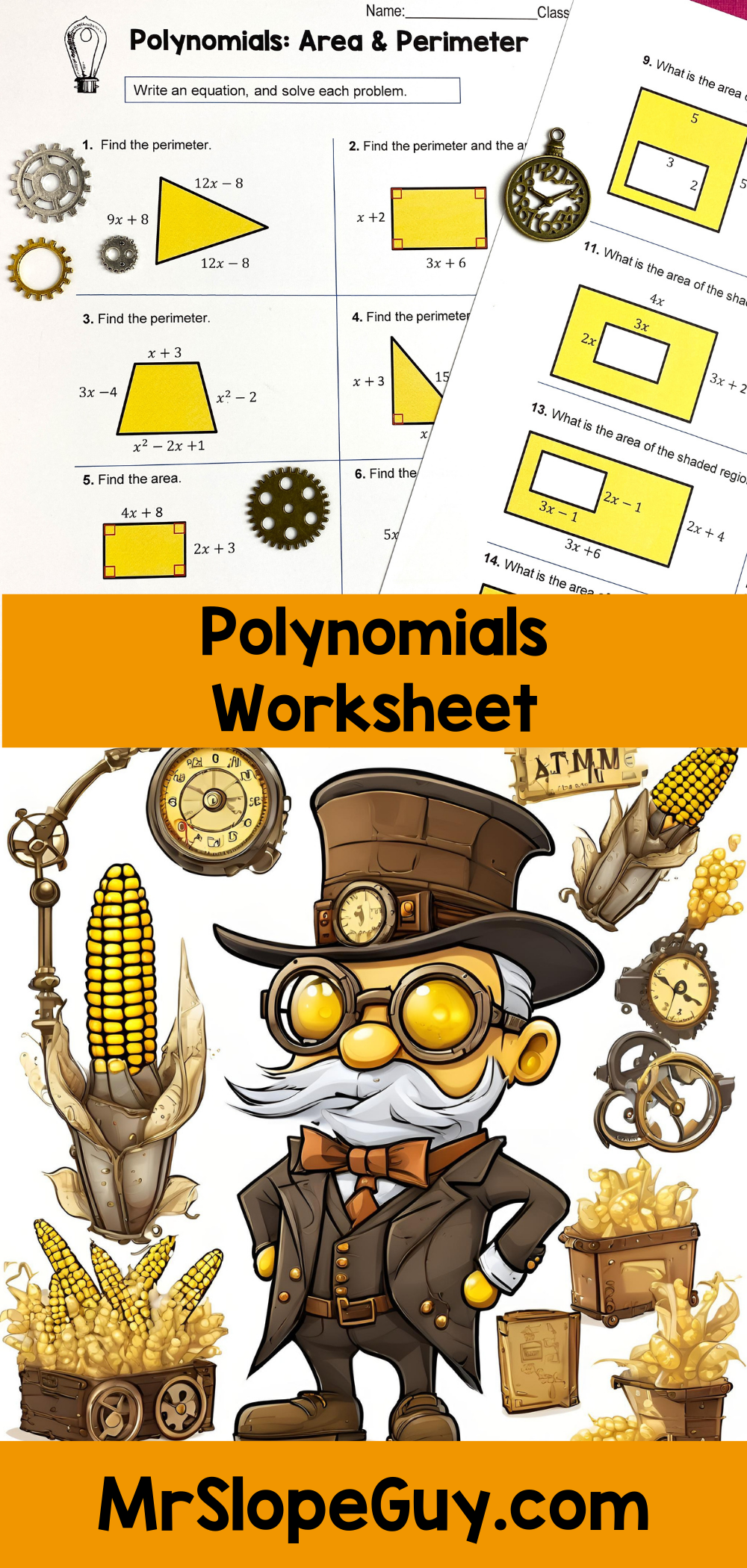The Ultimate Polynomial Field Test: Can Your Students Find Area and Perimeter?
When it comes to teaching polynomials, math teachers know the struggle is real. Add them. Subtract them. Multiply them. Divide them. Students often feel like they’re wading through a field of unfamiliar terms—without a tractor in sight.
So why not actually take them to the fields?
Welcome to the Polynomial Farm, where students grow their skills and harvest understanding using real-world word problems involving area and perimeter. It’s time to ditch the dry drills and plant the seeds of math mastery with a farming twist!
🌽 From Corn to Coefficients: Why This Worksheet Works
Our Polynomials: Area and Perimeter Worksheet transforms typical practice into a comprehensive, cumulative review. It’s the perfect way to bring together all the major operations students have learned about polynomials:
Adding & Subtracting polynomials (like combining fields of radishes and corn),
Multiplying binomials to find area (like calculating total square footage of oddly-shaped farm plots),
And even Dividing expressions when a smaller plot is cut out of a larger one (ever carved a radish patch out of a bigger plot of corn?).
This worksheet lets students apply everything they've practiced—and it’s all in the familiar context of finding area and perimeter, a foundational skill they’ve been working on for years.
🚜 The Power of Farm-Themed Word Problems
Let’s say Farmer Radish is planting rectangular fields, but one side is growing corn, and another is fenced off for goats. Students might need to:
Subtract the area of a square goat pen from a larger rectangular cornfield,
Use expressions like (2x + 3)(x + 4) to represent total space for planting,
Or calculate the total fencing needed around combined crop areas.
These word problems bring realistic context to math—and suddenly, polynomials aren’t abstract symbols. They’re useful tools for solving meaningful problems.
🌱 Why Area and Perimeter with Polynomials Is a Big Deal
Working with area and perimeter doesn’t just review operations—it helps students visualize math.
It reinforces the idea that expressions represent something real.
It strengthens algebraic fluency while checking for gaps in understanding.
It prepares students for more complex math involving composite shapes, especially when subtracting smaller areas from larger ones—something they’ll see again and again in geometry and algebraic modeling.
Think of it this way: mastering this worksheet is like harvesting a bumper crop after months of algebraic planting.
🧑🌾 Your Assessment-Ready Tool
Let’s be honest—students need practice that bridges skills and concepts if they’re going to succeed on quizzes, tests, and state assessments. This worksheet is ideal for:
Prepping for cumulative tests with built-in review of key polynomial skills.
Identifying student misconceptions about polynomial operations.
Boosting confidence by tying together multiple strands into one theme.
It’s also two-sided, comes with an answer key, and is perfect for classwork, homework, or small-group review.
📸 Insert Photo
Mr. Slope Guy poses with a giant cob of corn in Altoona, Iowa. Just like kernels on a cob, every math skill adds up to a full harvest!
🌾 Final Row: Download the Worksheet and Watch Math Grow
If you’re looking for an engaging way to reinforce and assess your students’ understanding of polynomial operations, this is it.
👉 Download the Polynomials: Area and Perimeter Worksheet now!
Give your students a meaningful challenge—and a chance to finally see why all those math operations matter when it’s time to build fences, plant crops, and calculate space for goats.
Area, perimeter, and polynomials... it’s a math harvest worth celebrating.




